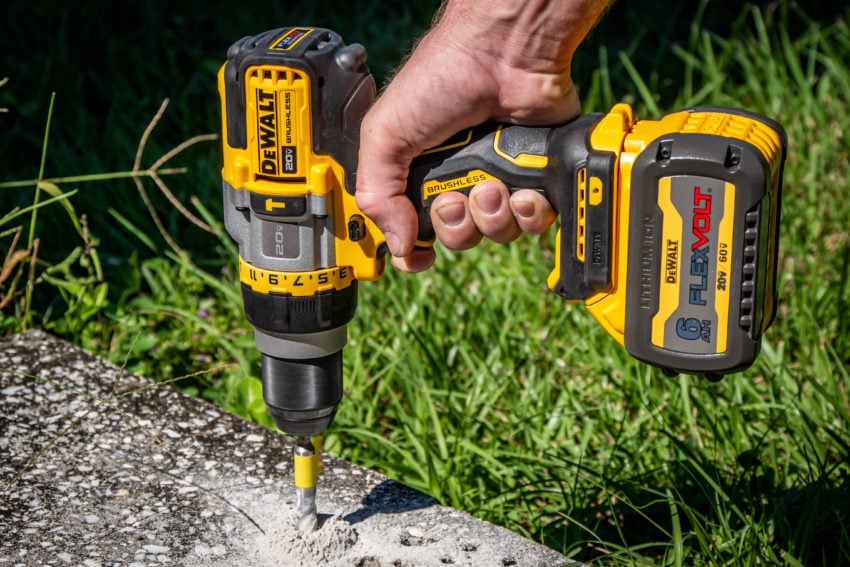DeWalt FlexVolt Advantage Hammer Drill Draws Higher Performance
The DeWalt 20V Max Hammer Drill with FlexVolt Advantage doesn’t look much different from the DCD997 hammer drill we’ve been using for the past couple of years, but what you can’t see promises to make a world of difference. It’s one of three flagship hammer drills for Team Yellow, and we’re going to help you decide if the DeWalt DCD999 is the right one for you.
Pros
- Top-tier performance
- Brushless motor
- Significantly faster work with high-demand accessories using a DeWalt FlexVolt battery
- 3 speeds
- Tool Connect chip ready
- LED light controls on the foot
Cons
- You have to use a heavy battery to get the best performance
Be sure to check out our article on the Best DeWalt Drill
DeWalt 20V Max FlexVolt Hammer Drill Performance
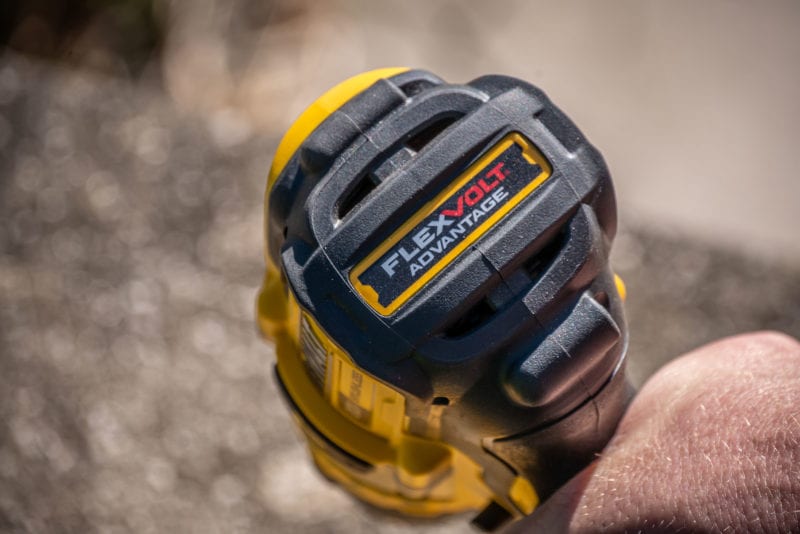
It’s what’s inside the housing that makes this drill so compelling. FlexVolt Advantage technology is an electronic system that senses the battery you’re using. When you slide a FlexVolt battery in, the electronics tell the motor to boost the performance in a major way.
How much more? DeWalt tells us to expect better than 40% more power when using a FlexVolt battery.
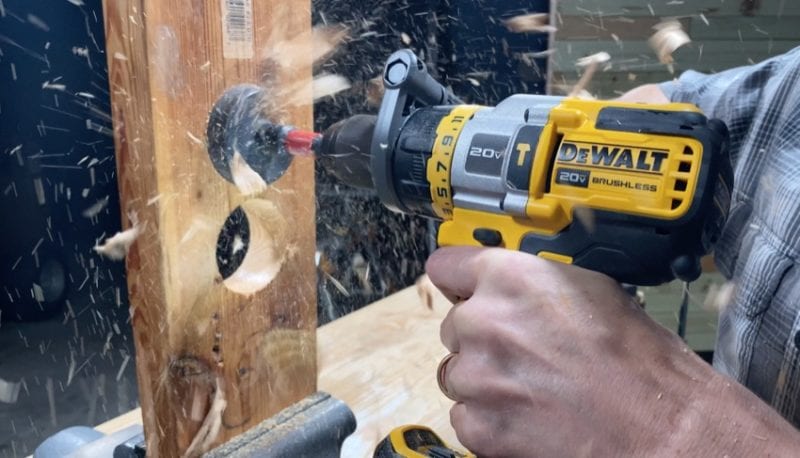
We ran tests with three different batteries using 1-inch and 2 1/8-inch hole saws. The 2.0Ah battery needed 11.37 seconds to finish the 1-inch hole. The FlexVolt battery gave the drill enough power to make it through in 4.35—a massive 62% faster.
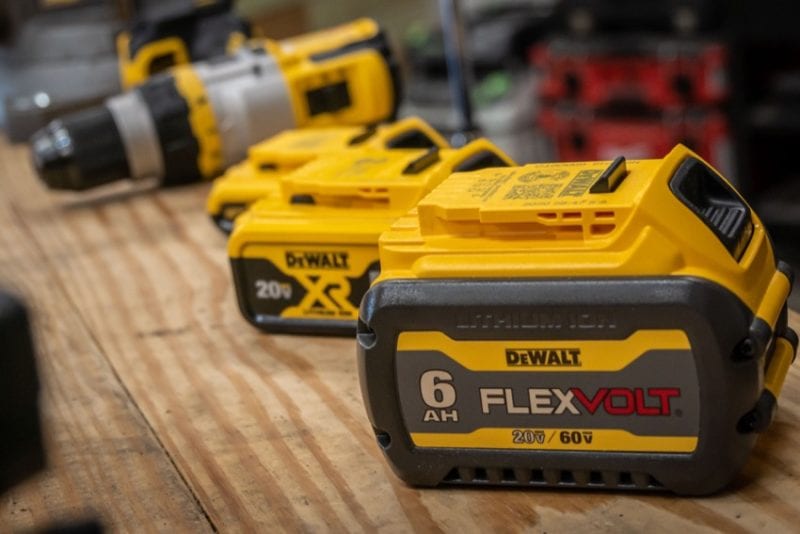
And it gets even better with the larger hole saw. With the 2.0Ah pack, we needed 38.62 seconds to get through. But it was just 6.17 seconds with the FlexVolt battery. That’s 84% faster!
| 1-Inch | 2 1/8-Inch | |
|---|---|---|
| 2.0Ah Battery | 11.37s | 38.62s |
| 5.0Ah Battery | 8.33s | 21.38s |
| 6.0Ah FlexVolt Battery | 4.35s | 6.17s |
Keep in mind that DeWalt’s 42% performance boost claim is about increased power, not speed, so our percentages are relative. But I think we can all agree that the performance boost we gain is huge.
These tests also show us that the harder the task, the more you gain from the FlexVolt Advantage technology. That’s something to keep in mind as you’re deciding on the best drill to buy.
DeWalt FlexVolt Advantage Vs Power Detect Vs 20V Max XR
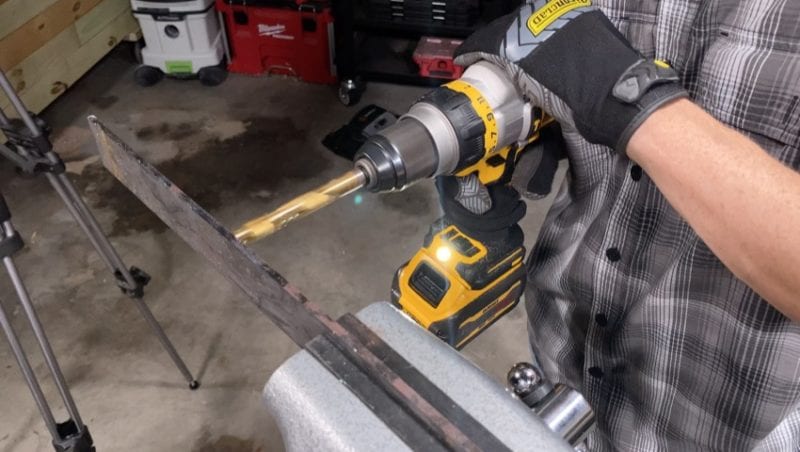
If you know DeWalt is the brand for you and you’re not sure which of their flagship models to go with, here’s a comparison chart to help you out:
| FlexVolt Advantage DCD999 | Power Detect DCD998 | 20V Max XR DCD996/997 | |
|---|---|---|---|
| Top Speed | 2000 RPM | 2000 RPM | 2000 RPM |
| Max Power | 1219 UWO | 1072 UWO | 820 UWO |
| Max Hammer Rate | 38,250 BPM | 38,250 BPM | 38,250 BPM |
| Length | 8.4 in | 8.4 in | 8.4 in |
| Bare Weight | 3.6 lbs | 3.5 lbs | 2.8 lbs |
| Bare Tool Price | $239 | $239 | $239 |
| Kit Price | $329 (1 x 6.0Ah FV) | $249 (1 x 8.0Ah) | $369 (2 x 5.0Ah) |
DeWalt 20V Max FlexVolt Advantage Hammer Drill Design
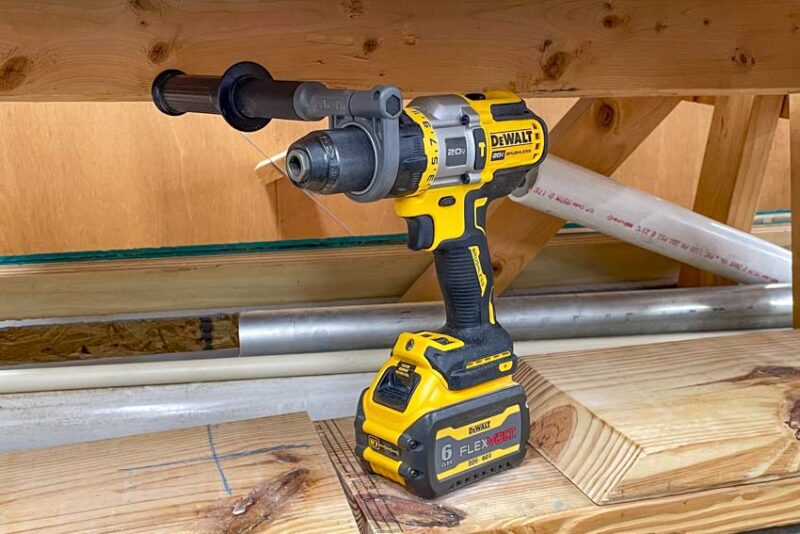
There’s a general design that doesn’t stray far from DeWalt’s other top-end offerings. You see it in the standard hammer drill (DCD996), its Tool Connect version (DCD997), a Power Detect model (DCD998), and the FlexVolt Advantage option (DCD999).
You switch between the three gear modes on top of the drill and LED light controls now appear on the foot.
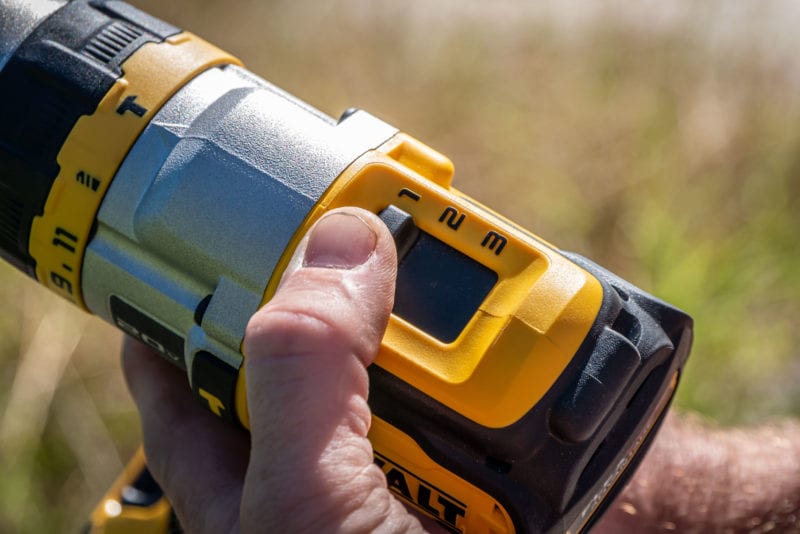
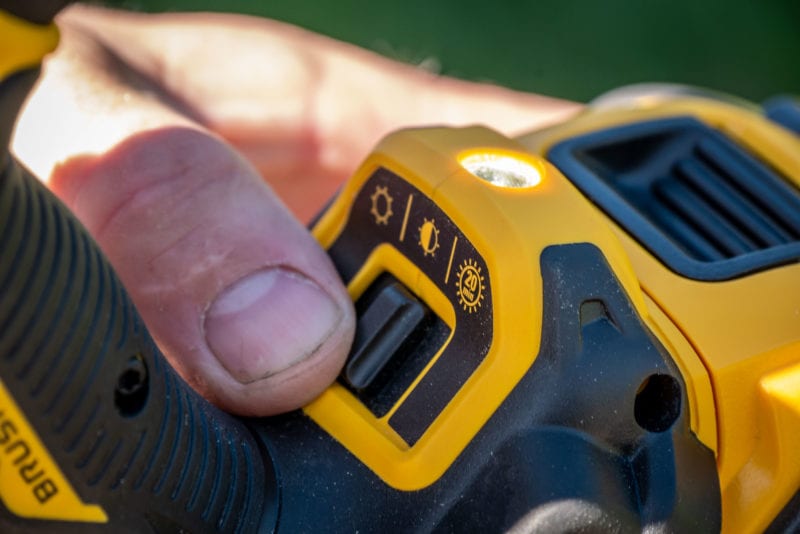
Bare, the DeWalt FlexVolt Advantage hammer drill weighs 3.6 pounds—just a couple of ounces more than the Tool Connect model we’ve been using. The battery you choose takes over from there.
- Bare Tool: 3.6 pounds
- 2.0Ah Battery and Tool: 4.4 pounds
- 5.0Ah Battery and Tool: 4.9 pounds
- 6.0Ah FlexVolt Battery and Tool: 5.9 pounds
DeWalt FlexVolt Advantage Hammer Drill Price
Let’s talk about price. You can pick up the DCD999 as a bare tool for $239 or in a kit with a 6.0Ah FlexVolt battery for $329. There are several combo kits available as well.
The best value is the DCK2100D1T1 combo kit for $329:
- DCD999 FlexVolt Advantage Hammer Drill (with side handle)
- DCF887 Impact Driver
- 6.0Ah FlexVolt Battery
- 2.0Ah Compact Battery
- Charger
- Kit Bag
The Bottom Line
The DeWalt FlexVolt Advantage hammer drill is competitive with a 5.0Ah battery and crushes most of its competition with a FlexVolt pack. It’s an interesting dynamic between weight and performance, but we think it works in DeWalt’s favor. Stick with the 5.0Ah pack for most of your drilling and driving, then pop that FlexVolt battery in for your high-demand drilling. The DCD996 and DCD998 are also excellent choices, but you get the highest available performance from the DCD999.
Specifications
- Model: DeWalt DCD999
- Max Speed: 2000 RPM
- Blow Rate: 38,250 BPM
- Power: 1219 UWO
- Length: 8.4 inches
- Weight: 3.6 pounds bare
- Warranty: 3 years
Learn more at DeWalt’s website.

